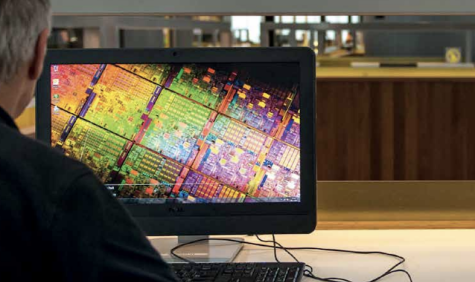"We translated changes and developments in society and education into functional requirements for the design of the digital learning environment."
Digital learning environment at Amsterdam University of Applied Sciences
The Amsterdam University of Applied Sciences (HvA) is redesigning the digital learning environment. The vision developed for this in 2016 prefers a light core and a rich shell. Aart Schouten, information manager at the HvA, knows that this solution is not yet available with the desired functionality: "The sector is ahead of the market at this point.
Light core with rich shell
In early 2016, the HvA drew up a vision for the digital learning environment. Schouten says: "We translated changes and developments in society and education into functional requirements for the design of the digital learning environment. We arrived at a model of a light core and a rich shell. That core must at least be able to integrate with third-party software. It must also contain all basic educational data, thus covering the entire educational cycle and teacher-student contact. For teachers, that teaching learning environment should be sufficient."
Desired solution not available
Many institutions have a preference for a core-and-shell model as advocated by the HvA. The starting point here is that the core is more or less the same for everyone within the university of applied sciences. The freedom for students, lecturers and programmes lies in the shell around it. But Schouten says there is one problem: "Such a solution, with a light core and good integration functionality, is not yet available. That is why we have now opted for a richer core anyway, with the possibility of then turning off certain modules."
Functional model SURFnet helps choose
The HvA is now in the product selection phase and will soon start a tender for a learning management system (LMS). Schouten says: "When preparing, we find SURFs functional model (pdf) very useful. It helps us distinguish the functional building blocks and determine how important we find them. In this way, we map out what we want to include in the tender.
"When preparing, we find SURFnet's functional model (pdf) very useful. It helps us distinguish the functional building blocks and determine how important we consider them to be."
Collaborate and exchange with peers
Many fellow institutions have the same problems and wishes, according to Schouten. "That is why it is useful to engage in discussions with peers. The DLWE special interest group is a good forum for this. We also attended the Challenge Day . There it became clear that our preferred model, with a lean core and rich shell, is shared by many institutions. That is also the model that SURF promotes. But we are therefore ahead of the market, as that model is not yet there. Nevertheless, it is good to look ahead. And the choice we are making now is not forever either. Almost all institutions are now working on their educational learning environment. It is good that SURF is helping and advising on this."
